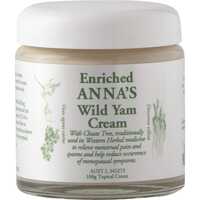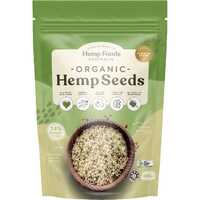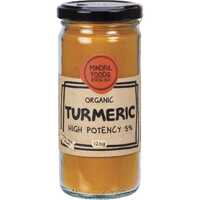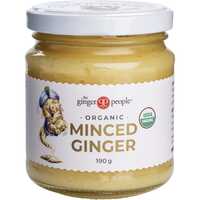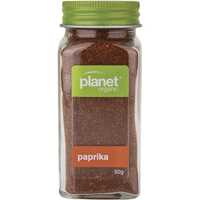Spices have long been used for culinary and folk medicine purposes. From all corners of the world, a variety of plants have been adopted by humans for their unique taste, ability to preserve food, and beneficial health properties. Among other things, spices are used to flavour entrees and main dishes, make dips and sauces, and produce desserts and beverages. They’re also ingested and used topically for health reasons — with different spices made into drinks, tinctures, and ointments to help people live a better life.
Let’s take a detailed look at spices, starting out with a short history and market overview and finishing with a review of the world’s top seven spices.
What Exactly are Spices?
Spices are the dried aromatic parts of some plants, including seeds, fruits, root, and bark. Spices are often lumped together with herbs, but they represent different plant substances. While herbs are also used to flavour foods, they are typically made from leaves, flowers, and stems. Spices have a huge range of different uses, including food flavouring and preservation, complementary medicine, religious ritual, and cosmetic application.
Spices come from specific parts of the plant that contain volatile oils, aromatic scents, or flavours. For example, cinnamon is a bark, turmeric is a root, cumin is a seed, and chilli peppers are a berry. According to the Food and Drug Administration (FDA), spices are “aromatic vegetable substances, in the whole, broken, or ground form, whose significant function in food is seasoning rather than nutrition.”
A Short History of Spices
Spices have a long history entwined with multiple civilisations. Most popular spices originate from Asia, the Middle East, or the Mediterranean — with many of the world’s most beloved spices having been traded since ancient Egyptian and Roman times. The ancient spice trade mostly originated in the Indian subcontinent, with cinnamon and black pepper traded as far back as 2000 BCE.
Cloves were used in Mesopotamia by 1700 BCE, nutmeg was introduced to Europe by 600 BCE, and Indonesian and Arab merchants spread spices to Egypt around the start of the Common Era. Despite an increase in global trade, spices were extremely expensive across Europe throughout the Middle Ages, with the Republic of Venice holding a monopoly on the spice trade over much of this time.
It wasn’t until the early modern period that spices became available to the wider population, with Spain and Portugal seeking new routes into Asia and Christopher Columbus bringing exotic tastes to the west.
Today, much of the world has easy access to most of the world’s spices. There is an increasing willingness to experience new ethnic flavours and a growing awareness of the health properties that many spices provide.
The Global Spice Market
The global spice market is booming, and it’s not likely to slow down any time soon. According to figures from Grand View Research, the market size was estimated at US$35.38 billion in 2021 and is expected to reach US$37.26 billion in 2022. This number is expected to grow further over the next decade, at a compound annual growth rate of 5.6% to reach US$57.70 billion by 2030. The Asia-Pacific region accounts for much of this demand, with 37.6% of all spice consumption.
The growth of various Asian cuisines has helped to drive the market as spice-heavy Thai, Indian, and Chinese dishes get more popular in the west. Growing health consciousness is another reason for this growth, as new markets learn lessons from ancient cultures and modern science becomes increasingly interested in studying the natural benefits of the plant world.
The Health Benefits of Spices
As global interest in herbs and spices continues to grow, there is an increased research appetite in the scientific community. While there are still limited studies into the nutritional value of herbs and spices, this is changing. A growing number of research papers are attempting to find potential biomarkers of food intake (BFIs) for various spices and other plant substances.
When spices have been studied, they’ve been linked to a number of health benefits. One comprehensive BFI review looked into the health benefits of 25 herbs and spices, including anise, basil, black pepper, caraway, chilli pepper and paprika, cinnamon, clove, cumin, curcumin, dill, fennel, fenugreek, ginger, lemongrass, marjoram, nutmeg, oregano, parsley, peppermint and spearmint, rosemary, saffron, sage, tarragon, and thyme.
These plant materials have been shown to offer protection against cardiovascular disease, neurodegenerative conditions, chronic inflammation, cancer, arthritis, obesity, and type 2 diabetes. Spices have also been noted for their antioxidant, antibacterial, antiviral, antifungal, and anti-inflammatory properties, which make them useful for a variety of internal and topical applications.
Many of the positive health effects associated with spices come through the direct action of their constituent phytochemicals. These polyphenols and their breakdown products target specific receptors or enzymes involved in anti-inflammatory or immune system responses. Many spices contain high levels of these compounds, including phenolic acids and flavonoids. In fact, the level of flavonoids found in many spices is much higher than in other polyphenol-rich foods, including well-known healthy products like broccoli, dark chocolate, and blueberries.
The Top Seven Spices in The World
Some popular spices are loved across the world for their unique taste and aroma. The following list highlights seven of the most well-known spices in the world, with all health claims coming from the above-mentioned review unless otherwise linked:
Chilli peppers
Also known as capsicum, the chilli pepper is a pungent fruit spice with a hot but sweet taste. This spice originally came from Mexico, but it travelled across the world when the Portuguese arrived during the 16th century. Chilli peppers are incredibly versatile, being used for food colouring, food flavouring, and pain relief. Capsaicinoids are the chilli pepper compounds responsible for heat, with other important constituents including carotenoids, vitamin A, vitamin C, and volatile oils.
Paprika
Also called bell peppers or sweet peppers, paprika is a popular ground spice from the Capsicum annuum plant. Once again, this spice came from Mexico and spread across the world via Spain from the 16th century. Paprika plants vary a lot in their taste and heat profiles, with sweet varieties among the most popular. This spice is red, orange, or yellow depending on its carotenoid content, with paprika-specific carotenoids such as capsanthin and capsorubin found to exhibit strong antioxidant activity.
Ginger
Ginger is a root spice and a member of the turmeric family. Like many spices, ginger is thought to have originated in India and spread to Egypt during the ancient spice trade. Ginger is well-known as an effective treatment for nausea, and it also has a range of anti-inflammatory, antibacterial, antipyretic, antilipidemic, antitumorigenic, and antiangiogenic properties. While the delicious flavour and powerful aroma of ginger come from its volatile oils, the nonvolatile aromatic ketones are thought to be more pharmacologically active.
Cinnamon
This bark spice is loved the world over for its unique flavour and aroma. Cinnamon comes from several tree species native to India, Sri Lanka, and Bangladesh, which had already reached ancient Egypt 4,000 years ago. Cinnamon is very healthy and known for its antidiabetic and glucose-lowering effects. However, it’s important to note that many commercial cinnamon products are made from the much cheaper and less beneficial C. cassia variety, which is not considered true cinnamon.
Cumin
Cumin doesn’t have a single origin, having come from China, India, the Middle East, and the Mediterranean region. Cumin is a key ingredient in many global dishes, from Asian meals to Moroccan tagines and Mediterranean snacks. Among other things, cumin contains antioxidants, helps to control blood sugar, and has anticancer properties. It also helps to fight bacteria and parasites and has an anti-inflammatory effect that may help to treat physical pain and other chronic health conditions.
Turmeric
Also known as curcumin, turmeric has a deep-yellow colour that makes it popular as a food colouring and dyeing agent. Turmeric is a central ingredient in many Asian dishes, with the rich oil of this spice having 40 identifiable compounds. Turmeric has shown a variety of antioxidant, anti-inflammatory, and antitumor activities and demonstrated additional health benefits relating to immune deficiencies, cardiovascular health, depression, Alzheimer’s disease, diabetes, arthritis, and inflammatory bowel disease.
Nutmeg
The unique taste and limited production of nutmeg made it a prized possession in European medieval cuisine. Nutmeg comes from an evergreen tree indigenous to the Spice Islands of Indonesia, and until the mid-19th century, this was the only place it was grown. Along with food, nutmeg is also incredibly popular in the perfume and pharmaceutical industries. Myristicin is a natural organic compound found in nutmeg oil, with this substance found to aid detoxification in animal studies.
If you want to add more spice to your life, Healthy Being has everything you need. We have amazing spice products from some of the healthiest and most ethical brands in the business, and everything is available to you at unbeatable prices. Shop now and enjoy free shipping options across Australia and worldwide delivery!


 Certified Organic
Certified Organic Vegan Friendly
Vegan Friendly  Vegetarian
Vegetarian Organic Ingredients
Organic Ingredients Dairy Free
Dairy Free Gluten Free
Gluten Free Keto Friendly
Keto Friendly

















